Results 5,211 to 5,220 of 12094
Thread: Anandtech News
-
07-31-15, 08:36 AM #5211
Anandtech: ASUS Launches X99-M WS for Haswell-E Workstations
I love a good workstation – something with the power under the hood that acts as the silent black-box knight when work needs to be done. Most workstations are pre-built, expensive and come with a support package under the impression that the person using it might not know exactly what is involved (but the software package will do). They are also usually based on the enterprise level platforms. There is still a market for self-build workstations too, focusing most on ISV compatibility, hardware compatibility and longevity that cross the line between enterprise platforms and consumer platforms, usually to differentiate cost structures. ASUS’ line of consumer oriented workstation motherboards fits in this space.
We tackled the ASUS P9X79-E WS from the last generation of products, and over the course of the launch of Haswell-E, ASUS updated the line with a full E-ATX X99-E WS model. In a flurry of mATX X99 launches, today sees the official North American launch of the smaller form factor micro-ATX version of the workstation line, the X99-M WS.
With the smaller form factor, as we’ve seen on other smaller X99 motherboards, there are some different arrangements in functionality over the regular X99. For example, the X99-M WS here has only four memory slots and eight SATA ports, but is equipped with x16/x16 full speed PCIe 3.0 lanes as well as a PCIe 2.0 x2 M.2 slot in the middle. (Note the third PCIe slot is from the CPU also, affording x16/x8/x8 with 40-lane CPUs and x16/x8/x4 with 28-lane CPUs.)
The dual I210-AT and I218-LM Intel network ports on the rear are supplemented with a 3x3 802.11ac tri-stream dual band module, with USB 3.1 ports (two Type-A) coming into the mix. Audio is provided with by the Realtek ALC1150 codec under the enhanced Crystal Sound 2 arrangement.
With the workstation level branding the components are subject to more extensive validation requirements, as well as full compatibility with Xeon E5-2600/1600 v3 processors and up to 64GB of registered ECC memory.
ASUS has set an MSRP of $280 and the board should be available from today in North America.
Source: ASUS, extra photos from TechPowerUp
Gallery: ASUS Launches X99M-WS for SFF Haswell-E Workstations

More...
-
07-31-15, 10:30 AM #5212
Anandtech: Analyzing Intel-Micron 3D XPoint: The Next Generation Non-Volatile Memory
The current mainstream memory technologies, namely DRAM and NAND, have been around for decades. While clever engineering work has allowed the two to scale below 20nm geometries, both technologies have their inherent architectural limitations. But what if you were to take the best characteristics of DRAM and NAND and create a whole new type of memory? Meet Intel's and Micron's new 3D XPoint, the next generation non-volatile memory technology. It is said to provide up to a thousand times better endurance and performance than modern NAND technology does, while being non-volatile and very scalable at the same time. Read on for our full analysis.
More...
-
08-03-15, 07:31 AM #5213
Anandtech: The Intel Broadwell Review Part 2: Overclocking, IPC and Generational Anal
In our first part of our Broadwell coverage, we rushed to test both the i7-5775C and the i5-5765C in our new benchmarking suite against the previous generation of Haswell processors as well as AMDs Kaveri lineup. In Part 2, we have spent more time with the architecture to see how it stacks up against the last four years of Intel, as well as probing the high end overclocking capabilities.
More...
-
08-03-15, 07:31 AM #5214
Anandtech: Lattice Announces First superMHL Chips: Sil8630 & Sil9396
Earlier this year at CES, the MHL Consortium announced the latest version of the Mobile High-Definition Link (MHL) standard, superMHL. The latest iteration on MHL, superMHL was introduced to further ramp up the amount of bandwidth available to MHL devices along with also integrating some of the latest display technologies. At the time of superMHL’s announcement the focus was on the high-end of the market – driving 8K TVs through the use of the 6 lane superMHL cable – however superMHL was designed to benefit the lower bandwidth segment of the market as well, and this is where Lattice Semiconductor is starting today, with the announcement of the first superMHL chips.
Being announced today by Lattice (née Silicon Image) are the first transmitter and the first receiver to support superMHL, the Sil9396 and Sil8630 respectively. These two chips are small, one-lane chips intended to allow superMHL usage with mobile and PC devices in order to drive displays at up to 4Kp60, and will be the first use for superMHL.
As previously announced alongside superMHL itself earlier this year, superMHL is available as a USB Type-C alt mode, and this is where Lattice is focusing their efforts for today’s mobile-centric products. With Type-C expected to quickly take over the market on both mobile devices and laptop PCs, it’s quickly become the port of choice for virtually every other standard that wants to move high speed data, and superMHL is no exception. What results is an impressive (and dizzying) array of connectivity options, as superMHL can interface with a number of different display types.
That said, the two mobile superMHL combinations that are most likely to actually be seen in the wild are Type-C to HDMI active and Type-C to MHL (i.e. HDMI passive). The difference between the two is that as with previous generations of MHL technology, superMHL can be carried into a TV that supports the protocol over an HDMI port, allowing the use of a straight-through passive cable. Otherwise superMHL can be actively converted via a chip such as the Sil9396 in an HDMI cable, allowing a superMHL device to interface with an HDMI-only display. In both cases superMHL offers the equivalent of HDMI 2.0, including HDCP 2.2 support and the annexes for improved color spaces and HDR.
What Lattice and the MHL Consortium is hoping to do right now in what is a crowded market for display connectivity standards is to have superMHL stand apart from the other standards by the combination of legacy MHL support, USB Type-C support, and the fact that it can work over a single high-speed lane. Legacy MHL support in this context is rather straightforward, as it means superMHL devices can directly transmit to existing MHL receivers by downgrading the protocol, retaining MHL’s power changing abilities in the process. Otherwise HDMI of course can’t be natively passed over Type-C, and DisplayPort requires multiple lanes for 4Kp60 – 4 for DP 1.2, and 2 for DP 1.3 if a display supports the reduced blanking timings. This leaves further lanes open for USB 3.x Superspeed data, meaning that superMHL can drive a 4Kp60 display and carry a full USB Superspeed data connection at the same time. Though as Superspeed requires 2 lanes per connection, we’re not aware of any scenario for USB where a third lane is any better than having just two lanes, though superMHL would still leave the last lane open for something else.
Meanwhile, along with today’s announcement of the first transmitter/receiver pair, we’ve also learned a few more technical details about the superMHL protocol. superMHL operates at 6Gbps per lane, using lossy compression in order to pack 4Kp60 into that limited amount of bandwidth. So for 4Kp60 we’re looking at around 3:1 compression on the image side. DisplayPort 1.3 by contrast takes up an additional lane to deliver 4k60, but it doesn’t require image compression. Alternatively compression is in the works via Display Stream Compression, but the DisplayPort 1.3 standard has not yet been updated to include it.USB Type-C Alt Mode Display Standard Comparison superMHL DisplayPort 1.3 Maximum Resoluion 4Kp60, 4:4:4 @ 24bit 4Kp60, 4:4:4 @ 24bit Type-C Lanes Required 1 2 Image Compression Lossy Compression Lossless (No Compression) TV Interface superMHL-over-HDMI (Passive)
HDMI (Active Conversion)HDMI (Active Conversion) Power Charging USB-PD or MHL (legacy) USB-PD
Finally, along with announcing their first superMHL transmitters/receivers today, Lattice is also announcing that engineering samples for the Sil8630 and Sil9396 are now available. It will still be some time before these chips will appear in retail products, but it means that OEMs can now being testing them and building designs that ingrate these chips.
More...
-
08-03-15, 01:30 PM #5215
Anandtech: Strontium Nitro Plus Nano USB 3.0 64GB Flash Drive Capsule Review
Flash drives are a dime a dozen these days, and most of them carry uninteresting specifications. In particular, flash drives advertising smaller physical footprints have tended to carry disappointing performance numbers. We were surprised when Strontium sent us their announcement of the Nitro Plus Nano USB 3.0 flash drive with 100 MBps+ read speeds. We had reviewed the Mushkin Atom 64GB flash drive with a similar form factor, and the numbers claimed by Strontium were quite a bit more than what we managed to get with the Mushkin Atom. Intrigued by Strontium's performance claims, we got a sample in for further evaluation.
High-performance flash drives have traditionally employed a SATA SSD controller behind a USB 3.0 - SATA bridge. However, this increases the drive cost in what is essentially a price-sensitive market. Vendors have recently begun to introduce native high-performance USB 3.0 flash controllers, and the Strontium Nitro Plus Nano sports one such controller. The list of flash drives used for comparison purposes is provided below:
- SanDisk Extreme 64GB
- Mushkin Atom 64GB
- Strontium Nitro Plus Nano 64GB
Hardware Design and Internals
In terms of external design and features, the Strontium Nitro Plus Nano USB 3.0 drive is small and discreet. A red cap that protrudes 8mm from the USB slot and has a total width of only 16mm ensures that the unit can fit in easily even in the ill-placed / oriented USB ports. A small hole at the top accommodates the bundled thread that enables hanging the flash drive off a keychain. As we can see from the photograph below, the Strontium Nitro Plus Nano USB 3.0 is one of the smallest flash drives that we have evaluated in its capacity class.
Without opening up the unit, it is possible to identify the controller and flash inside the unit.
The controller is the Silicon Motion SM3267 single-channel USB 3.0 controller. This appears to be an ideal controller for low-cost flash drives with a small physical footprint because it reduces BOM (bill-of-materials) cost as well as PCB area by integrating the required power IC and crystal oscillator. Depending on the flash memory used, Silicon Motion claims performance of up to 160 MBps reads. Strontium has gone in for Samsung TLC NAND in the flash drive. This must be compared to the Phison PS2251-07 used along with Toshiba TLC NAND in the Mushkin Atom 64GB drive.
Testbed Setup and Testing Methodology
Evaluation of DAS units on Windows is done with the testbed outlined in the table below. For devices with USB 3.0 connections (such as the Strontium Nitro Plus Nano that we are considering today), we utilize the USB 3.0 port directly hanging off the PCH.
The full details of the reasoning behind choosing the above build components can be found here.AnandTech DAS Testbed Configuration Motherboard Asus Z97-PRO Wi-Fi ac ATX CPU Intel Core i7-4790 Memory Corsair Vengeance Pro CMY32GX3M4A2133C11
32 GB (4x 8GB)
DDR3-2133 @ 11-11-11-27OS Drive Seagate 600 Pro 400 GB Optical Drive Asus BW-16D1HT 16x Blu-ray Write (w/ M-Disc Support) Add-on Card Asus Thunderbolt EX II Chassis Corsair Air 540 PSU Corsair AX760i 760 W OS Windows 8.1 Pro Thanks to Asus and Corsair for the build components
Synthetic Benchmarks - ATTO and Crystal DiskMark
Strontium claims read and write speeds of 130 MBps and 100 MBps respectively, and the read number is backed up by the ATTO benchmarks provided below. Writes only seem to go up to 60 MBps with our standard testing queue depth. Unfortunately, these access traces are not very common in real-life scenarios.
CrystalDiskMark, despite being a canned benchmark, provides a better estimate of the performance range with a selected set of numbers. As evident from the screenshot below, the performance can dip to as low as 0.615 MBps for random 4K writes.
Benchmarks - robocopy and PCMark 8 Storage Bench
Our testing methodology for DAS units also takes into consideration the usual use-case for such devices. The most common usage scenario is transfer of large amounts of photos and videos to and from the unit. The minor usage scenario is importing files directly off the DAS into a multimedia editing program such as Adobe Photoshop.
In order to tackle the first use-case, we created three test folders with the following characteristics:
- Photos: 15.6 GB collection of 4320 photos (RAW as well as JPEGs) in 61 sub-folders
- Videos: 16.1 GB collection of 244 videos (MP4 as well as MOVs) in 6 sub-folders
- BR: 10.7 GB Blu-ray folder structure of the IDT Benchmark Blu-ray (the same that we use in our robocopy tests for NAS systems)





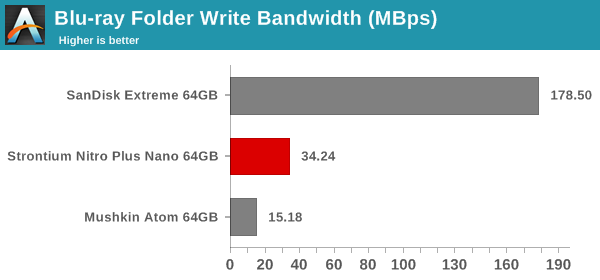
For the second use-case, we take advantage of PC Mark 8's storage bench. The storage workload involves games as well as multimedia editing applications. The command line version allows us to cherry-pick storage traces to run on a target drive. We chose the following traces.
- Adobe Photoshop (Light)
- Adobe Photoshop (Heavy)
- Adobe After Effects
- Adobe Illustrator
Usually, PC Mark 8 reports time to complete the trace, but the detailed log report has the read and write bandwidth figures which we present in our performance graphs. Note that the bandwidth number reported in the results don't involve idle time compression. Results might appear low, but that is part of the workload characteristic. Note that the same testbed is being used for all DAS units. Therefore, comparing the numbers for each trace should be possible across different DAS units. In any case, the PCMark 8 storage workloads are hardly the type of traces that would ever run on drives such as the Nitro Plus Nano.
In general, these results show that the Stronitum drive performs better than the Mushkin one in most relevant benchmarks. The Mushkin is the only one that can be used for apples-to-apples comparison, since the SanDisk drive employs a SATA controller behind a USB 3.0 - SATA bridge, and has a much bigger physical footprint.


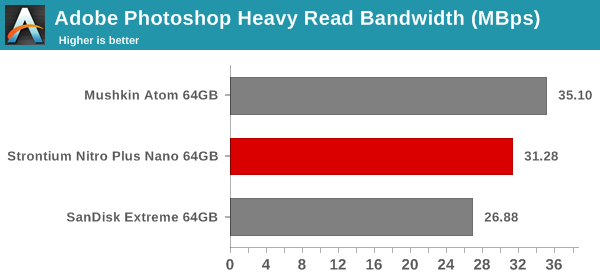


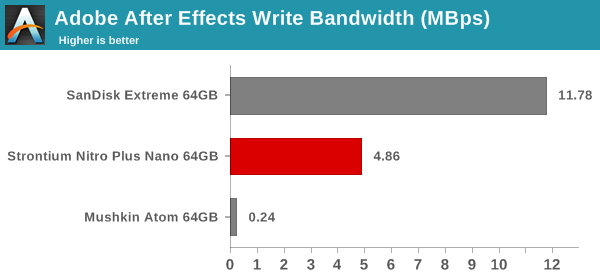


Performance Consistency
Yet another interesting aspect of these types of units is performance consistency. Aspects that may influence this include thermal throttling and firmware caps on access rates to avoid overheating or other similar scenarios. This aspect is an important one, as the last thing that users want to see when copying over, say, 50 GB of data from the flash drive, is the transfer rate going to USB 2.0 speeds. In order to identify whether the drive under test suffers from this problem, we instrumented our robocopy DAS benchmark suite to record the flash drive's read and write transfer rates while the robocopy process took place in the background. For supported drives, we also recorded the internal temperature of the drive during the process. The Strontium unit, however, doesn't expose the temperature over the USB interface. The graphs below show the speeds observed during our real-world DAS suite processing. The first three sets of writes and reads correspond to the photos suite. A small gap (for the transfer of the videos suite from the primary drive to the RAM drive) is followed by three sets for the next data set. Another small RAM-drive transfer gap is followed by three sets for the Blu-ray folder.
An important point to note here is that each of the first three blue and green areas correspond to 15.6 GB of writes and reads respectively. Throttling, if any, is apparent within the processing of the photos suite itself.
Despite the small size, the Strontium unit has not problems with sustaining the expected transfer rates and there seems to be no thermal throttling at play. The write rates are quite disappointing for small-sized files, but, that is to be expected given the nature of the device.
Concluding Remarks
The performance of the drive is impressive when one considers the size of the unit. Obviously, the numbers are not going to be similar to what a real SSD controller with multiple flash chips can give us. This brings us to the most important aspect in this particular market niche - the pricing. As per the press release, the Strontium Nitro Plus Nano USB 3.0 64GB drive is expected to cost $20.
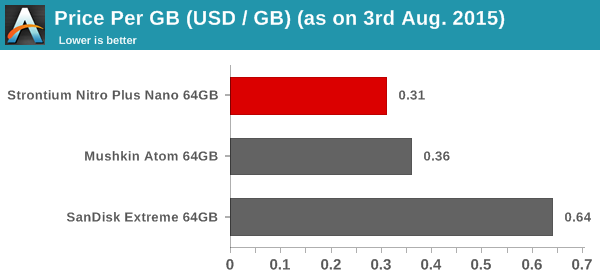
The Strontium unit manages to beat the Mushkin Atom in both pricing and performance numbers for real-life workloads. In addition, Windows reports an usable capacity of 60.44 GB with the Strontium unit, while the Mushkin one comes in at 57.70 GB only. When it comes to packing a punch in the smallest possible form factor for a USB 3.0 flash drive, the Strontium Nitro Plus Nano USB 3.0 is the king of the hill right now. Pretty much the only complaint that could be made against the unit is the absence of a protective covering for the USB connector.
More...
-
08-04-15, 04:35 AM #5216
Anandtech: Acer Announces Ultra Low Cost Cloudbooks With Windows 10 Home
Today Acer is launching a new line of low cost notebooks, which are branded as Acer Aspire One Cloudbooks. There will be an 11.6-inch model, and a 14-inch model, and Acer manages to get both models under $200. We have seen some surprisingly decent notebooks around this price range, such as the HP Stream 11, but Acer has managed to move the barrier to entry even farther down.
The 11.6-inch model starts at only $170, with a bump in storage boosting the price to $190, or for $199.99 you can step up to the 14-inch model. For this price you get a 1366x768 resolution display, which is likely going to be a TN panel. The fanless design is powered by the 14nm Intel Celeron N3050 processor, which is a dual-core model with a base frequency of 1.6 GHz and turbo frequency of 2.16 GHz. This is going to be Airmont cores, similar to the previous N series Celerons with Silvermont. Performance expectations should be in check, but with a 6 watt TDP it should be able to maintain its peak frequency fairly well. As a comparison, the Surface 3 has four Airmont cores at up to 2.4 GHz, but with just a 2 watt scenario design power. Graphics will also get a boost over the older Celerons, with the Airmont cores now paired with Gen 8 graphics and 12 execution units rather than just 4 Gen 7 units available on the older chips.
One of the ways Acer was able to hit these price points was due to the storage available. The 11.6-inch model starts with just 16 GB of storage, and even with the Windows 10 storage features which can save even more space than Windows 8.1’s WIMBoot, 16 GB is not a lot for a Windows install. For those interested in this device, the $20 boost to 32 GB would be a wise investment. The 14-inch model starts with 32 GB and will also offer a 64 GB model later on.
Both models will feature 802.11ac wireless, which is nice to see since that seems to be one of the first cuts on a budget notebook. Acer is positioning these devices as Cloudbooks, and they include one year of Office 365 Personal and the included 1 TB of OneDrive storage, and Acer is also promoting their cloud based abApps to help in keeping files in sync with smartphones and tablets.Acer Aspire One Cloudbook Cloudbook 11 Cloudbook 14 CPU Intel Celeron N3050
Dual-core Airmont 1.6-2.16GHz
Intel HD Graphics 12 EUs 320-600MHzMemory 2GB DDR3L Storage 16-32 GB eMMC 32-64 GB eMMC Display 11.6" 1366x768 14.0" 1366x768 Ports USB 3.0 x 1
USB 2.0 x 1
HDMI
HeadphoneNetworking 802.11ac WiFi
Bluetooth 4.0Dimensions H: 0.70" (17.8 mm)
W: 11.5" (292.1 mm)
D: 7.95" (201.93 mm)H: 0.70" (17.8 mm)
W: 13.36" (339.3 mm)
D: 9.25" (235.0 mm)Weight 2.54 lbs (1.15 kg) 3.5 lbs (1.59 kg) Price $169.99-$189.99 $199.99+
While inexpensive, Acer has done well with the design. Both models are just 0.7-inches thick, and the smaller device comes in at just 2.54 lbs, and the larger 14-inch model tips the scales at 3.5 lbs. The textured pattern is finished in a mineral grey which looks quite sharp.
The Acer Cloudbooks will be available starting this month for the 11.6-inch model, with the 14-inch version coming in September.
Source: Acer
More...
-
08-04-15, 07:32 AM #5217
Anandtech: Seagate Backup Plus Portable 4TB USB 3.0 Drive Review
The rise in popularity of USB 3.0 has enabled a large number of high-speed bus-powered storage devices. While flash drives and external SSDs can take advantage of the high-speed nature of the interface, bus-powered external hard drives (2.5") still remain the only way for consumers to have an economical high capacity option. Seagate recently launched the Backup Plus Portable 4TB USB 3.0 drive based on one of the first 4TB 2.5" drives in the market. Read on for our review.
More...
-
08-04-15, 08:30 AM #5218
Anandtech: Seagate and Micron Announce 1200.2, S600DC SAS SSD Families for Enterprise
Today Seagate and Micron are jointly announcing their latest generation of Serial Attached SCSI (SAS) MLC SSDs for enterprise use. The new families of drives are designed to significantly broaden the Enterprise SSD lineup of both companies with a wider range of capacities, features, and performance options, for with up to 36 new drive models altogether.
Making today's announcement particularly different (and wordy) is the fact that both companies are announcing the same drives under their own brands. Developed in a joint partnership between the two companies, Seagate and Micron have developed a single line of drives to be sold under different brands by each manufacturer for the purpose of making the drives available from multiple vendors for second-sourcing needs. For Seagate these drives will be known as the 1200.2 series, and will total 36 drives altogether. Meanwhile for Micron these drives will be known as the S600DC series.
We'll start things off with Seagate, who has released the most information on these new drives. In Seagate's 1200.2 lineup the drives are available in four different tiers that trade cost against the higher endurance and performance, enabled through greater over-provisioning. The “High Endurance” line (rated for 25 drive writes per day) is tuned for write-intensive workloads and lots of random I/O. The “Mainstream Endurance” line (10 DWPD) is intended for a workload with a 70/30 mix of reads and writes, while the “Light Endurance” (3 DWPD) and “Scalable Endurance” (1 DWPD) are for very heavily read-intensive workloads with mostly sequential I/O.
Capacity options vary between the different tiers: the HE drives are available in only two smaller sizes (200GB and 400GB), the SE drives in two large sizes (1920GB and 3840GB), and the middle two tiers offer more choices between those extremes. As is often the case, the smallest drives in each tier have somewhat lower performance ratings, which causes the 200GB HE drive to be rated a bit slower than the three largest ME drives. All models are using the same platform - that is the same controller and NAND - and Seagate isn't binning the Micron MLC flash chips between tiers, so all of the performance differences stem from the differences in firmware configuration and the amount of over-provisioning.
All drives use a dual-channel 12Gbps SAS connection, and these are the first 12Gbps drives that can use the two channels in tandem for higher performance rather than fault tolerance. This enables peak sequential read speeds of 1700 MB/s to 1800 MB/s, compared to the single-channel limit of 1200 MB/s. Peak 4kB random read speeds are also great looking, ranging from 140,000 IOPS to 210,000 IOPS. Advertised write speeds are nothing special, but the SAS interface does allow almost all of the drives to exceed the capabilities of 6Gbps SATA for sequential writes.Seagate 1200.2 SAS SSD specifications Endurance Tier HE ME LE SE Capacities (GB) 200, 400 400, 800, 1600, 3200 400, 480, 800, 960, 1600, 1920, 3200, 3840 1920, 3840 Sequential Read 1800 MB/s 1800 MB/s 1750 MB/s 1700 MB/s Sequential Write 600-800 MB/s 600-800 MB/s 390-750 MB/s 500 MB/s 4kB Random Read 205k-210k IOPS 205k-210k IOPS 170k-190k IOPS 140k IOPS 4kB Random Write 70k IOPS 66k-70k IOPS 35k IOPS 15k IOPS Average latency 115 µs Endurance 25 DWPD 10 DWPD 3 DWPD 1 DWPD Warranty 5 years
Rounding out the enterprise feature set, every drive is available in a self-encrypting model, and the ME models are also offered in variants with FIPS 140-2 validated encryption. The drives have full power-loss protection and a 5 year warranty. All models use the 2.5” form factor. Drives under 1TB are 7mm thick while the larger models are 15mm thick.
Meanwhile for the Micron S600DC branded release of these drives, we don't have quite as much information for today's announcement. We know that Micron will be releasing three different models of the drive as the S610DC, the S630DC, and the S650DC. However we don't know which models are the higher endurance models and which are the higher capacity models.
Overall, the fact that Seagate and Micron are entering into a second-sourcing partnership on SSDs here is an interesting one, and one that makes a lot of sense given the desire for multiple sources from enterprise customers. And to be clear, this is true second-sourcing for as much as Seagate and Micron can achieve it, making it more than just both companies selling the drives under their own brands. In order to ensure a second-source supply, the two companies are using second-sourcing wherever practical in their supply chain and have geographically-diverse stockpiles for the important components that are only available from a single source, so they are confident they can offer a reliable ongoing supply.
Finally, we're told that the drives will be on display this month, with Seagate planning on publicly demonstrating the 1200.2 SSD next week at Flash Memory Summit. As for availability, Seagate tells us that the 1200.2 series will be shipping to channel partners starting this month.
More...
-
08-04-15, 10:30 AM #5219
Anandtech: Toshiba and SanDisk Announce 48-layer 256Gbit TLC 3D NAND
This week Toshiba and SanDisk are announcing a new milestone in their joint development of flash memory. Back in March Toshiba announced a 48-layer 3D NAND technology that they were sampling in the form of a 128Gb MLC die. Now Toshiba and partner SanDisk have built a 256Gb TLC die on their 48-layer process. Toshiba will be sampling that chip starting in September, and SanDisk has selected it as their first 3D NAND device for mass production.
Central to this development is the outfitting of Fab 2 at their facility in Yokkaichi, Japan. The previous Fab 2 was demolished in 2014 and construction started on a replacement to be used as their first fab for 3D NAND. The new Fab 2 has now started pilot production of 3D NAND as it is being readied for mass production, scheduled to begin in 2016. Toshiba says the fab will be completed in the first half of the year and SanDisk plans to be shipping products using their 3D NAND by the end of the year.
The new 3D NAND will face experienced competition from Samsung, currently shipping 32-layer 3D NAND in capacities up to 128Gb for both MLC and TLC. Meanwhile, Intel and Micron have stated that their 32-layer 3D NAND will be in mass production by the fourth quarter of this year in the form of a 256Gb MLC die and a 384Gb TLC die. SK Hynix is to begin mass production of a 36-layer 128Gb MLC die during the third quarter and is working toward a 48-layer TLC that will be available in 2016.
All of the major flash manufacturers have now publicized their plans for introducing 3D NAND. Planar NAND won't be disappearing overnight or even in a year, as it takes a lot of time and money to convert a fab to a new process. But from here on out, we can expect all the most interesting news about NAND flash memory to be about 3D.
More...
-
08-04-15, 11:00 PM #5220
Anandtech: Xbox One To Get TV DVR Capabilities
Those that never got to experience Windows Media Center as the hub of a home entertainment system likely wonder why there is such a vocal group of people who cherish it and what it brought to the living room. The ease of use of the wonderful ten foot user interface was one of those times where software architects just got it right. I built my first Windows Media Center PC about ten years ago, and it had capabilities that some cable providers still can’t match, including the ability to stream recorded content from the PC to an Xbox 360 (or a couple of other less successful Media Center Extenders) where it could be played back in another room, and you could quickly resume where you left off somewhere else in the house.
So it is understandable that there was disappointment when Windows Media Center did not get an update for Windows 8’s launch, and perhaps even some anger when it was announced that Windows Media Center would not be coming to Windows 10 at all, and any installations of Windows 10 over computers with Windows Media Center would end up in a prompt to let you know it would be removed. I think WMC was one of Microsoft’s finest examples of good software bundled with hardware support, and though we lacked the CableCARD standard in Canada, I was still able to record multiple HD stations on my now defunct WMC PC and broadcast them around the house.
I loved the software, and even the version that came with Windows 7 back in 2009 is to this day far superior to any cable box I have seen even six years later. But despite this, I eventually mothballed my WMC PC and went with the less robust Cable Co DVR setup just last year. The reason? Having a full PC running in my living room 24/7 was not without its challenges. I was of course the only support line to call if anything happened, and partially due to the lack of native HD support in Canada I decided to give it up. I don’t enjoy what I have now at all, but it works, and I, like many others, have found myself watching less cable TV anyway.
With the rise in streaming services like Netflix, Hulu, and Amazon Video, cable TV certainly is under pressure it has likely never faced before. And so I think it makes a lot of sense that Microsoft has decided to shift its focus away from WMC, which was almost certainly an extremely expensive venture, to the Xbox One.
Back in April, Microsoft announced that it was adding Over-The-Air TV tuner support to the Xbox One for North America, supplementing the existing tuner that was already available in Europe. At the time, I said that adding DVR support would put this over the top, and today we have an official announcement that this is happening. The Xbox One will offer OTA TV DVR capability next year. And the introduction certainly seems to move the Xbox One into a WMC replacement.
You will be able to stream recorded TV from the Xbox One to any Windows 10 PC, or even mobile devices running Android or iOS using the Smart Glass app. The new connected age also lets you schedule recordings through the Smart Glass app so you can set up recordings almost anywhere. In a way, it basically replicates what WMC could do by streaming to an Xbox 360, but reverses it.
Is it a true replacement for WMC? No, certainly not until it supports CableCARD, since it restricts you to just recording OTA broadcasts, but for a lot of people this is exactly what they want. The Xbox One can now be at the center for people who “cut the cord” and ditch cable, since it offers a pretty good assortment of streaming and local video playback.
Windows Media Center was great for its time, but I am glad to see that Microsoft is not abandoning it completely. Moving the capabilities to the Xbox One make a lot of sense, and should open the technology and experience up to a lot more people, since you don’t need an IT background to keep your DVR up and running any longer. They have not announced any plans for support for recording from either CableCARD yet, but still, this is a nice step for the Xbox One and should be a great solution for a lot of people.
Source: Xbox Wire
More...
Thread Information
Users Browsing this Thread
There are currently 15 users browsing this thread. (0 members and 15 guests)




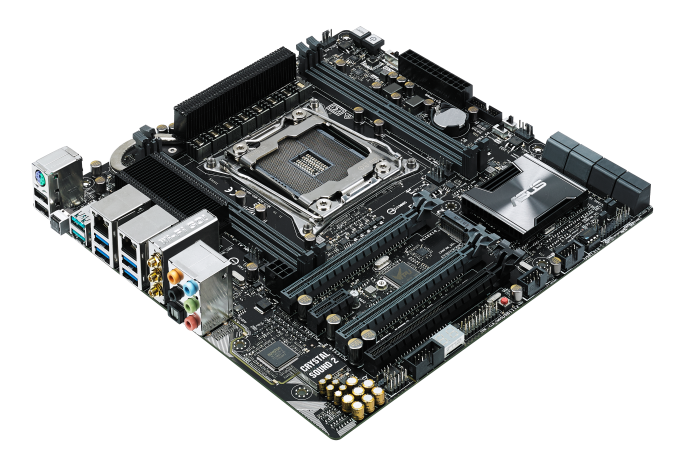

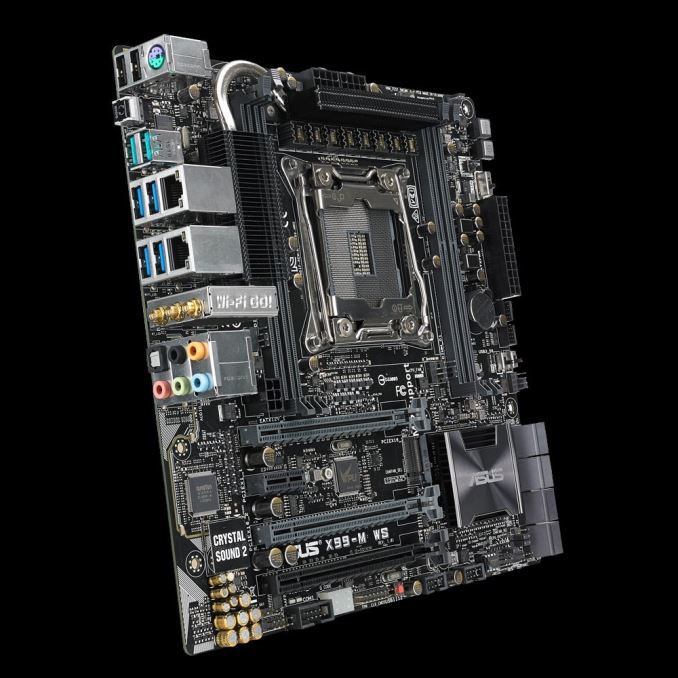
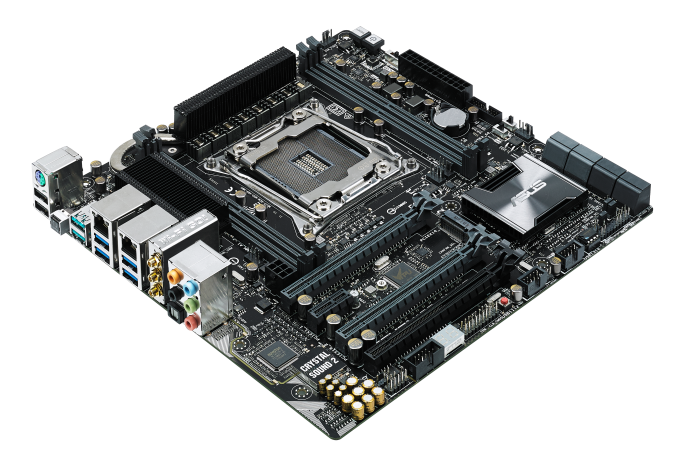

 Quote
Quote
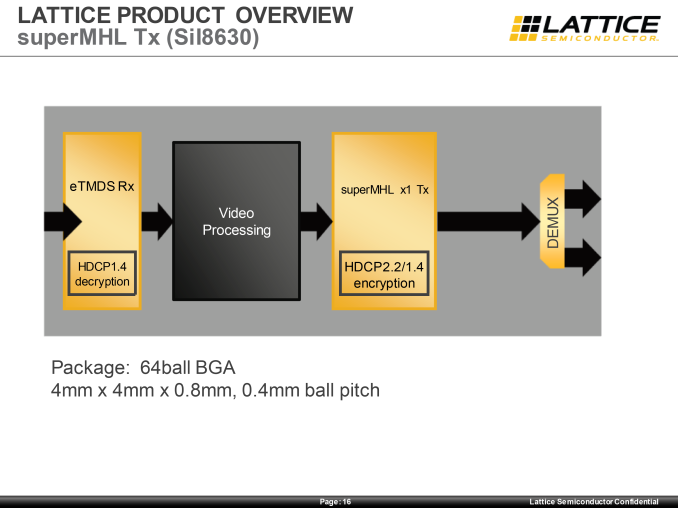

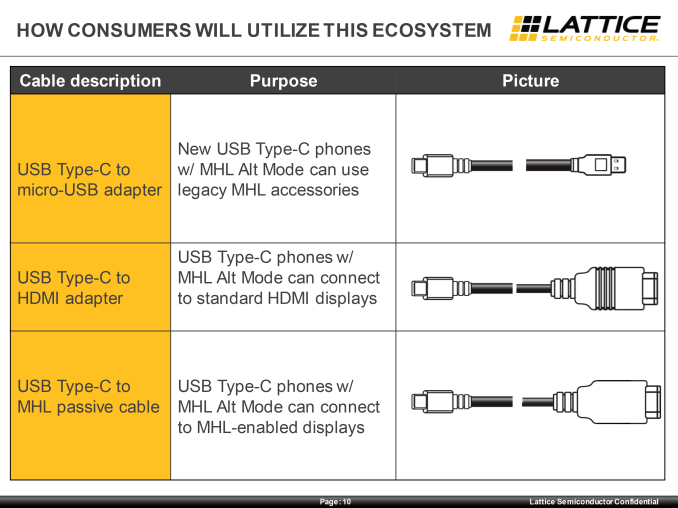
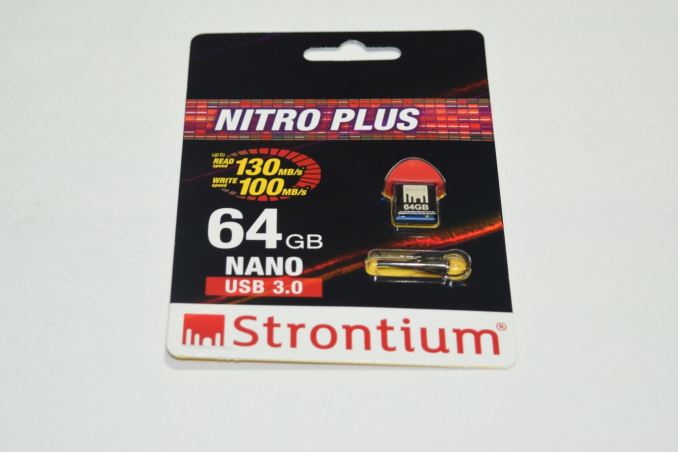
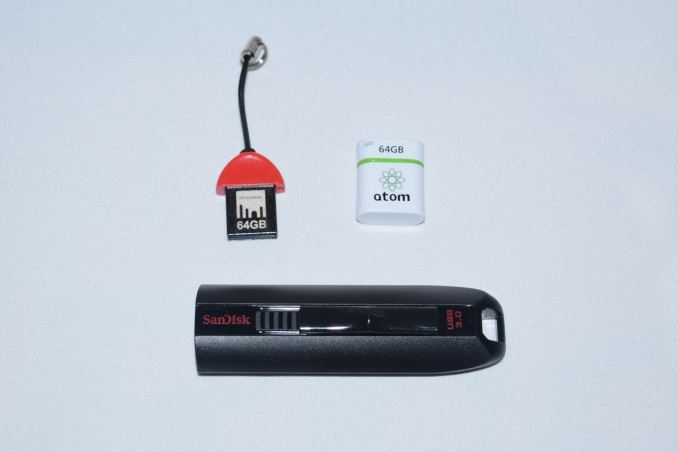
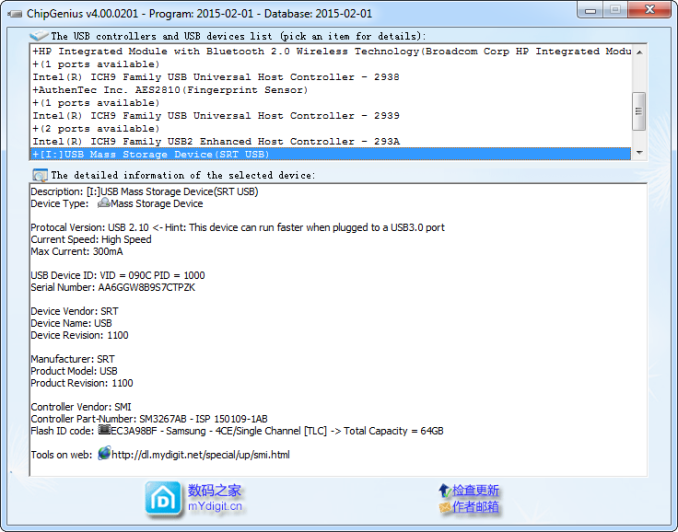
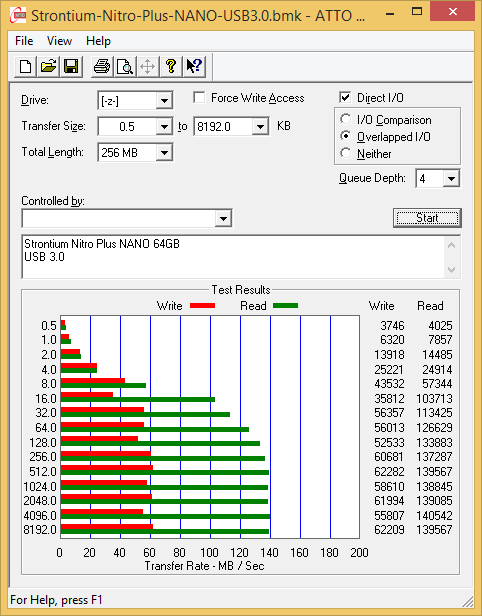
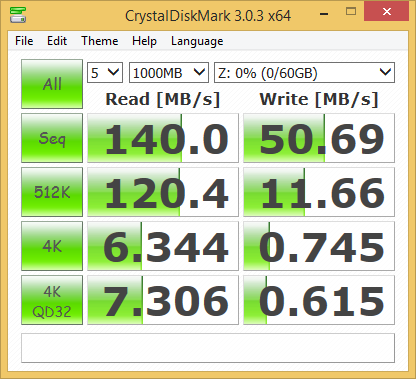
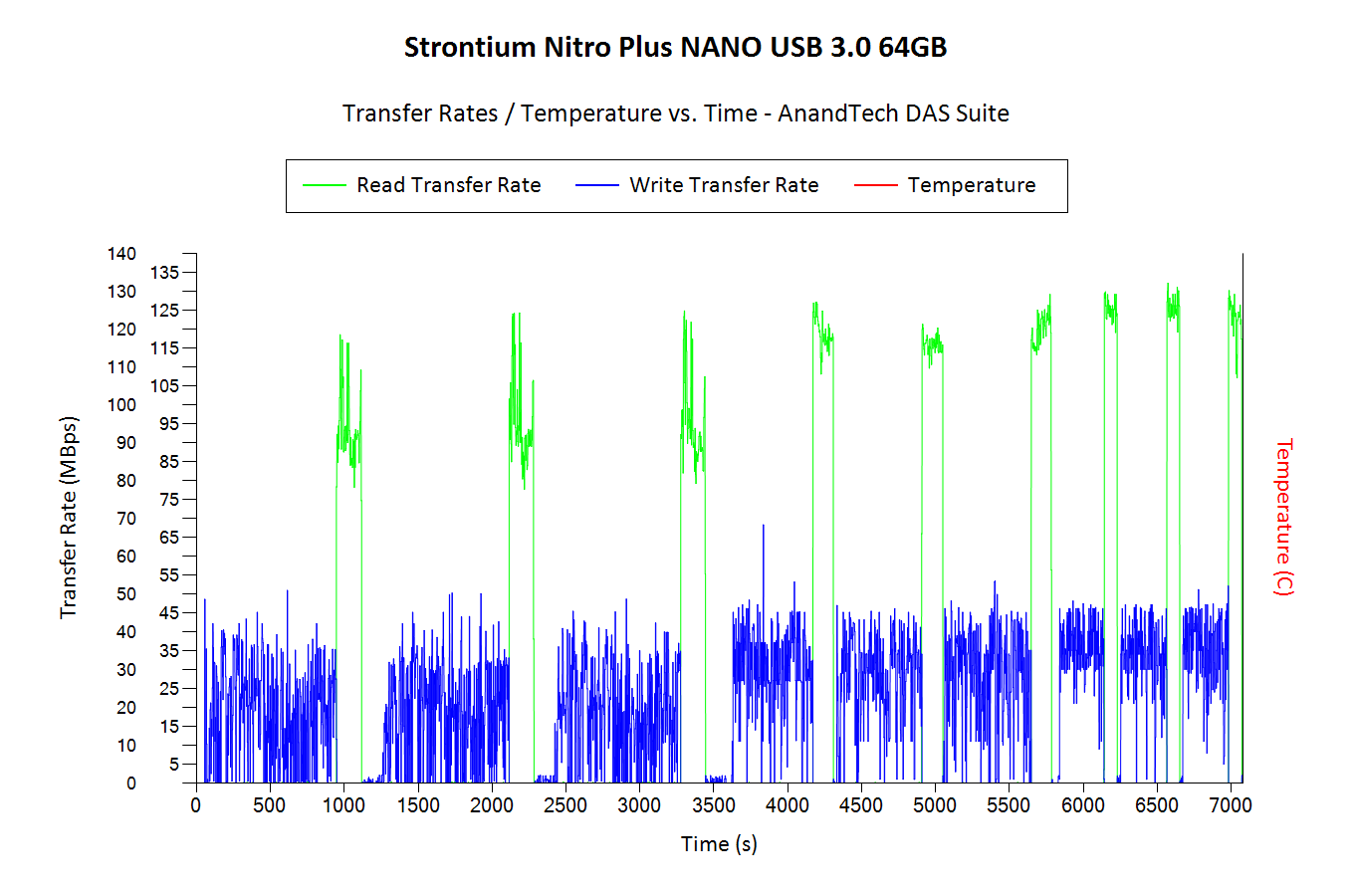

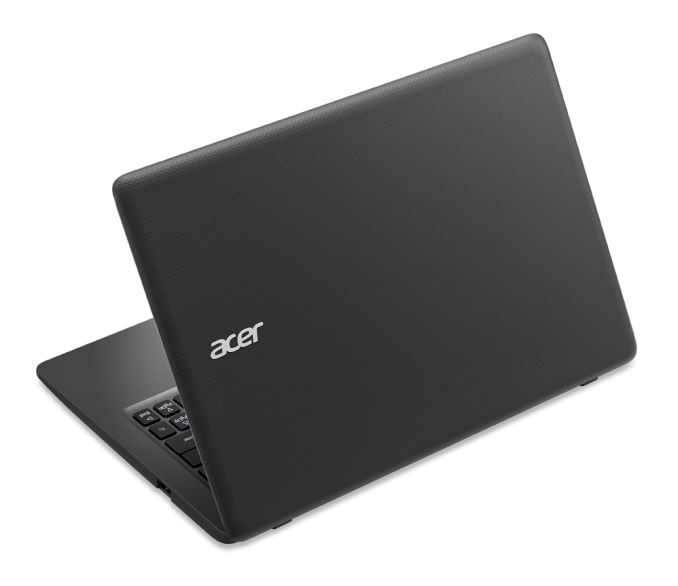




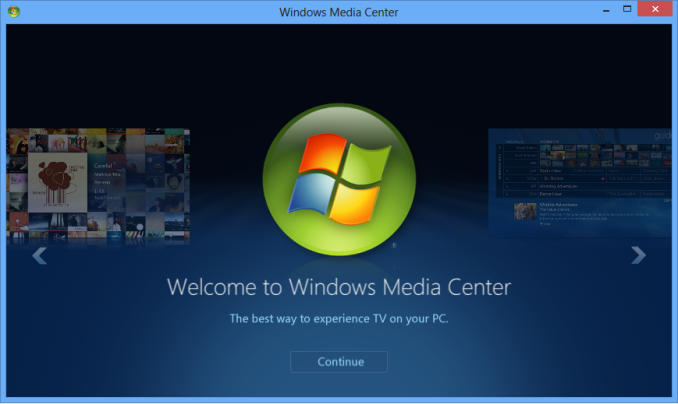
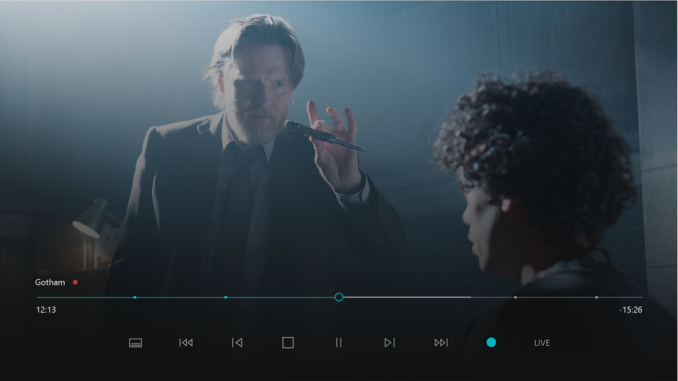
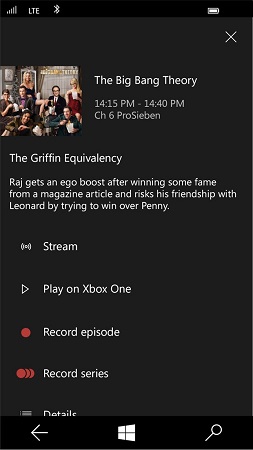
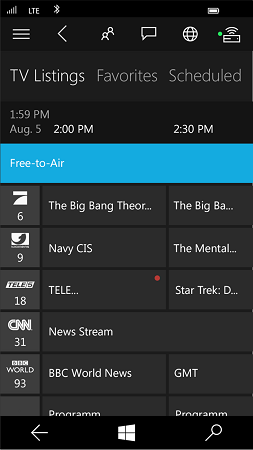
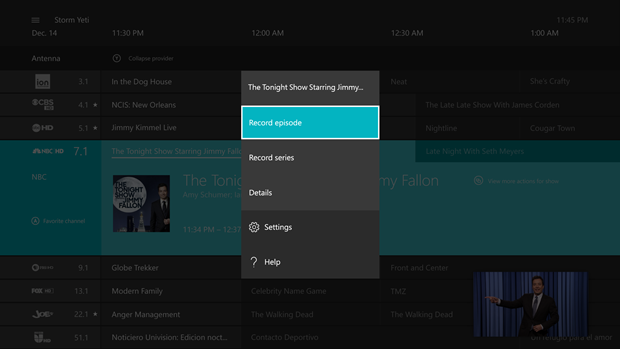
















Bookmarks